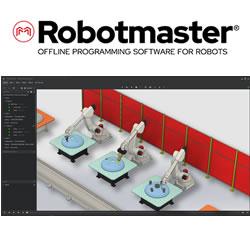These Five Exponential Trends Are Accelerating Robotics
The US service-sector jobs at risk from a robot revolution
Innovators offered chance to develop their ideas with world leading robotics manufacturer ABB Robotics
Obama and Merkel open HANNOVER MESSE
Dmitry Grishin Doubles Down on Robotics With New $100 Million Fund
9 open source robotics projects
Why Everyone Must Get Ready For 4th Industrial Revolution
National Robotics Week delights kids
Collaborative Robots Will Transform Logistics Says DHL Group
Amazon Hosted A Secretive Robotics Conference In Florida
18 months since the toolkit's release, soft robotics is flying
Carnegie Mellon robotics selected for research projects totaling more than $11 million
Would you buy meat from a robot butcher?
Mercedes Boots Robots From the Production Line:
Republican-Leaning Cities Are At Greater Risk Of Job Automation
Records 466 to 480 of 920
First | Previous | Next | Last
Industrial Robotics - Featured Product

